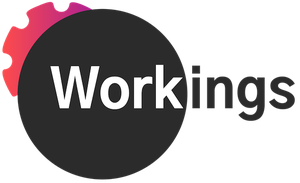Like most people, I’ve learned the hard way that things don’t always go according to plan. I’ve also learned the value of responding to unexpected turns with as much grace as one can muster.
Two examples from my career remain seared onto my brain:
- My first entrepreneurial venture (a forerunner of Groupon called ActBig) was slated to close a round of funding in New York, where we were based, on Thursday, September 13th, 2001—two days after 9/11. Needless to say, the close didn’t happen. The world had come to a screeching halt. As the weeks wore on without the funding falling back into place, my partner and I realized that a graceful transition—finding a good home for our technology, paying our vendors, and providing severance to our employees—was the best we could do with our remaining cash.
- Years later at Steyer, the universe dealt another blow, albeit on a smaller scale: one terrible Friday morning, our head of sales, a critical role in any company, lost her husband in a tragic accident. After a six-week bereavement leave, she attempted to return before realizing that what she really needed was an open-ended break from work. At the time, losing such a singular talent from the team was devastating, but again: the only way forward was with grace. We supported her decision, hired anew, doubled down on the team’s emerging talents—and persevered.
My list of Setbacks Encountered Over the Years could go on and on, but there’s no need. Anyone who’s worked anywhere for even a few years knows that businesses—and each of the individuals they employ—are always moving through an asteroid field of sorts: dodging disaster as best we can most of the time, but inevitably suffering a few direct hits along the way.
(It’s around now that I can hear our COO Katelyn Reilly’s delightfully wry voice in my head: “Good pep talk, Kate. Sheesh!”)
But bear with me. The point is: businesses, and people, are constantly facing transitions. Some of these transitions are driven by shocking external events. More commonly, thank heavens, they’re driven by less dramatic factors: companies changing course, for example, or individuals growing out of their roles and choosing to pursue something different. No matter what the catalyst for change is, I’m a big believer in aiming for graceful transitions—characterized by mutual respect, clear communications, orderly handovers, and a genuine wish that all parties involved will thrive in whatever new roles and incarnations the future holds.
Important disclaimer: here at Steyer, graceful transitions have sometimes eluded us. In a handful of cases, we’ve had transitions that were abrupt and painful. We’ve tried to learn from these instances, and still: they’ll haunt me forever. But for the most part, across multiple decades and hundreds of engagements, graceful transitions have been a hallmark of ours. Moreover, they help explain why our orbit includes so many of the same people wearing different hats: over the years, some of our consultants have become clients, and some of our clients have become consultants. What we’ve found is: if you focus on cultivating solid relationships with other human beings, and on producing good work, then any number of configurations can work well over time.
The latest example of this OP in action is Steyer Insights, a new user research practice we launched last week. Until a few months ago, this important work (What is more important to businesses in tight times than listening to customers and getting things right from the get-go?) was being done at Steyer, with Ray Salas and Rachel Green as our clients. In the wake of recent restructurings at their previous employer, Ray and Rachel have since chosen to become our colleagues. Together with their longtime collaborator Chris Walton (who, full disclosure, is also my longtime husband), they are taking their distinctive approach to research to all of our client companies and beyond. And as a team, they are relishing the chance to shape this work in the way they’ve always wanted to: laser-focused on capturing insights that above all are actionable, producing materially better outcomes for customers and for businesses.
Check it out if you feel moved to do so, and give us your feedback. It’s early days, and we’d love to hear how this lands!
Thanks for reading,
Kate
P.S. I’ve only written about 9/11 once before; it’s always seemed wrong to mention the loss of a business when the losses all around me were so much more profound. And I’ve never before written about the loss of our beloved sales colleague. I’ve chosen to do so now, because there’s a pervasive sense we are in bleak times. The reality though is that hard things—even very hard things—have always been a feature of life and business, and the task at hand has always been to move from one moment to the next as best we can.
P.P.S. In searching for that 9/11 piece, I came across a completely unrelated piece I wrote called “Why I Hate the Mommy Wars.” There you’ll see I’ve been emphasizing the transitory nature of roles—and the importance of graceful transitions—for years.
Photo by Damon Hall on Unsplash



